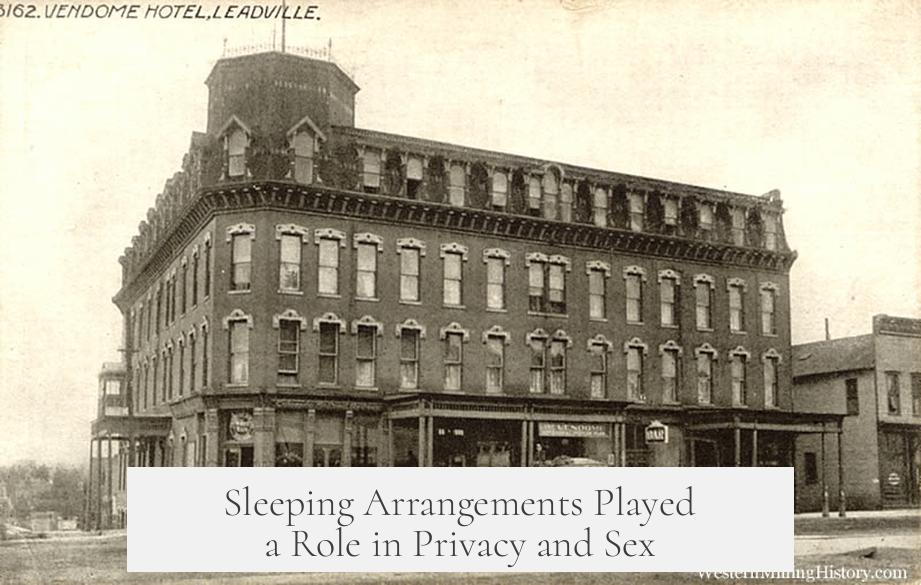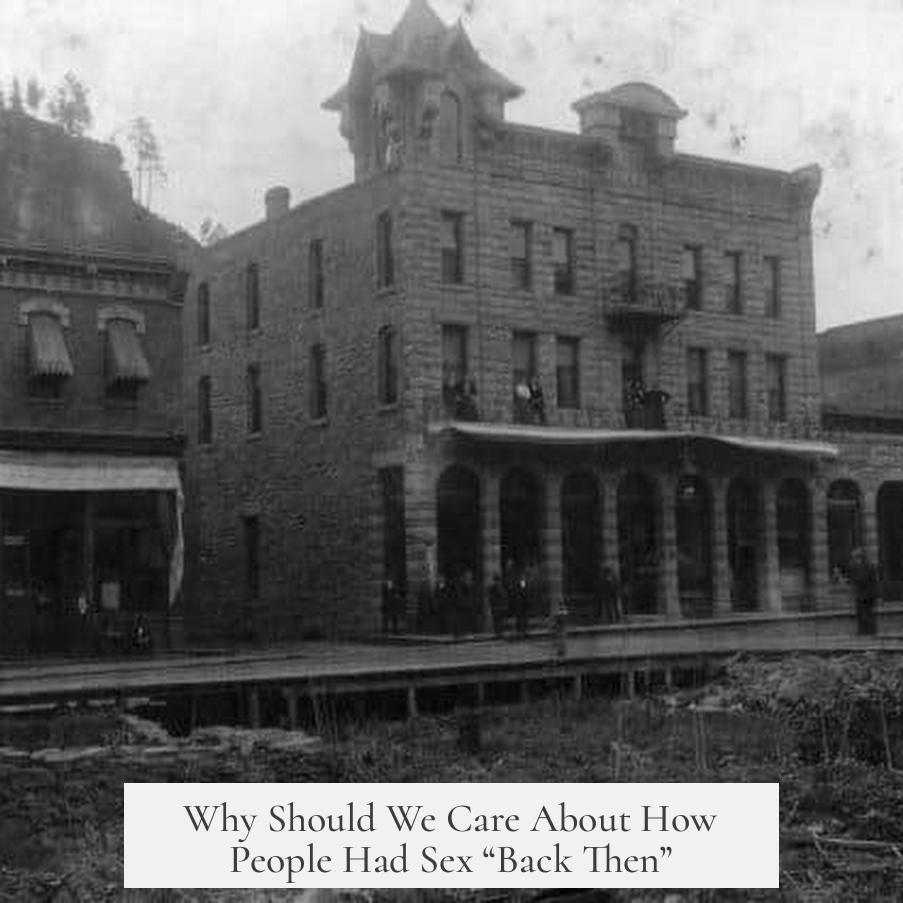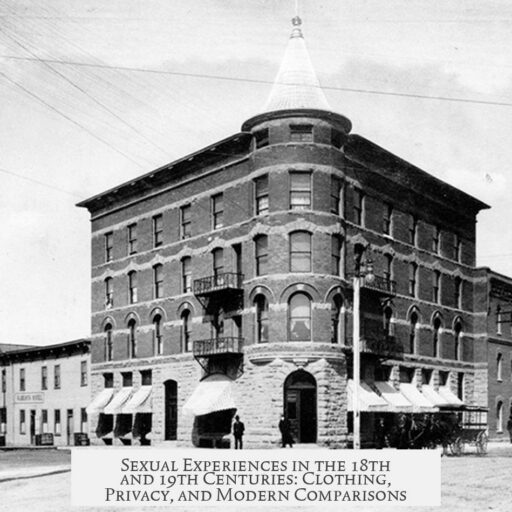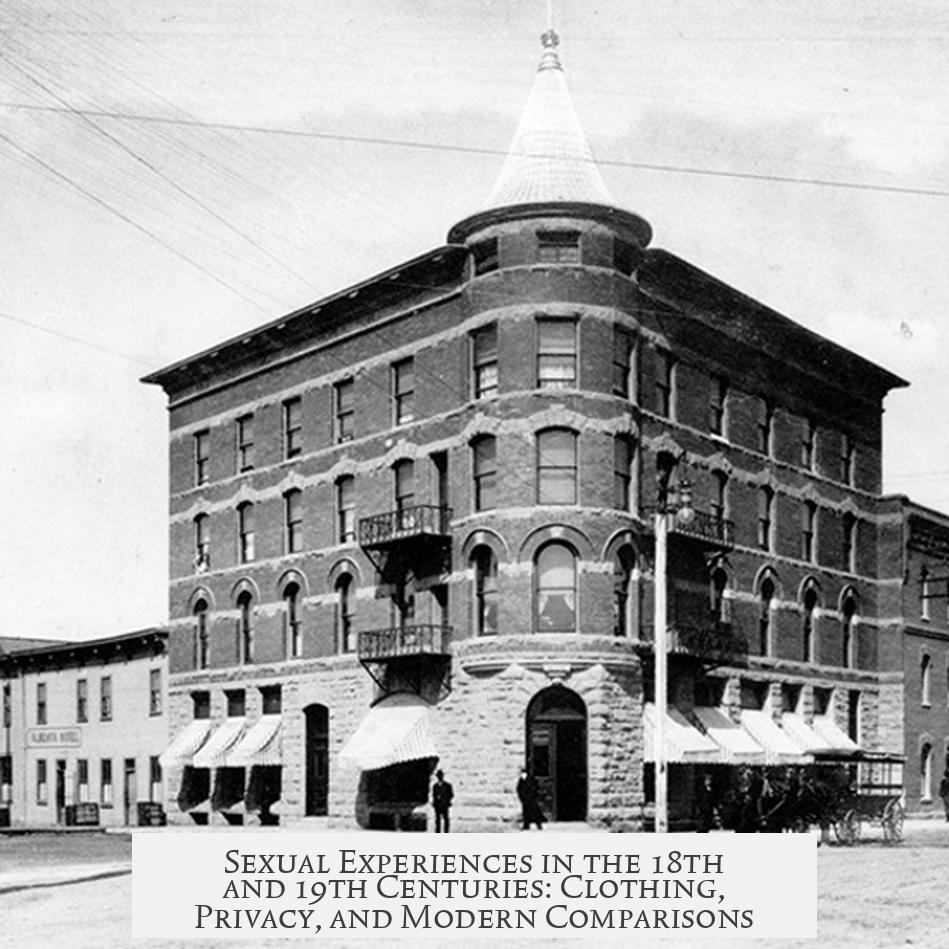Having sex in the 18th and 19th centuries combined practical routines with social norms that shaped the experience distinctly from modern times. Clothing styles, dressing habits, sleeping arrangements, and sexual behaviors all influenced how couples approached intimacy. Understanding these aspects offers a clearer picture of what sexual activity was like during these two centuries.
Clothing played a significant role in how sex unfolded. Contrary to popular belief, getting dressed or undressed was not an overly slow or elaborate process daily. While historical reenactments may show the painstaking effort required, most women dressed quickly and efficiently, focusing on routine rather than ceremony. Corsets presented the biggest challenge due to their lacing. Until the mid-19th century introduction of the split busk—an innovation simplifying breastbone fastening—tightening corsets took longer.
Women usually did not require servants to assist with dressing, especially outside elite circles. Most lived with family or had at least one servant available, who could help if necessary. Young or married women were rarely alone, which made assistance accessible without formal hires. Poorer women often avoided corsets altogether, making their dressing less complicated.
For at-home wear, women often chose more practical garments. The 18th century featured the “bedgown,” a loose, fastener-free jacket suitable for lounging or being seen by a husband. Wealthier women might wear peignoirs—lightweight, loose jackets with wrist-gathered sleeves—while wrapping gowns also offered comfort and modesty. By the late 19th century, “teagowns” became popular for informal wear around the house, sometimes without the corset, allowing faster, easier dressing.
When it came to the act of sex itself, full undressing was not always necessary. Women’s bifurcated undergarments—closed between the legs—were uncommon until the 20th century. Couples could engage in sexual activity without removing all outer layers in private settings, such as a drawing room. However, marital sexual activity was most often confined to the marital bed.
Sleeping arrangements impacted how and where sex occurred. Among the upper and upper-middle classes, spouses usually had separate bedrooms, sometimes connected to dressing rooms. This setup allowed privacy but also distinguished the spaces for sleep and intimacy. In contrast, working-class couples typically shared beds and bedrooms, making proximity and opportunity more immediate.
Women who wished to avoid sex with their husbands could do so by avoiding the marital bed, implying that most sexual encounters happened there. This social expectation shaped the timing and setting of intimacy. After the introduction of nightclothes, both partners generally undressed into these garments before bed, making full undressing before sex somewhat redundant. Wealthy individuals might be undressed by servants who handled expensive clothing carefully, but there was no ceremonial requirement to undress each other.
The process of undressing before sex thus reflected class and social status as much as practical needs. Working-class couples often removed their clothing themselves and engaged in sexual activity in a more straightforward manner.
| Aspect | 18th Century | 19th Century |
|---|---|---|
| Dressing Speed | Brisk, routine-based; corsets required lacing | Split busk eased corset lacing; teatime gowns emerged |
| Assistance | Family or single servants; mostly self-dressing | Similar; servants common in wealthier homes |
| At-home Attire | Bedgowns, peignoirs for informal wear | Wrapping gowns; teatime gowns without corsets |
| Sexual Practice | Possible without full undressing | Same; marital bed primary setting |
| Sleeping Arrangements | Separate rooms for upper classes; shared for working class | Same as 18th century |
Sexual life in the 18th and 19th centuries balanced social conventions with the practical realities of clothing, household structure, and intimacy. It rarely matched the dramatic or slow portrayals often seen in media. Couples managed clothing, space, and social expectations to maintain privacy and modesty while addressing desire and connection.
- Women dressed efficiently despite complex clothing, with corset lacing as the main time factor.
- Assistance was available but not essential for dressing or undressing.
- Informal, easy-to-wear clothing existed for use around the house and with husbands.
- Full undressing was not always necessary for sex; partial clothing removal was common.
- Sex typically happened in the marital bed, shaped by sleeping arrangements and social norms.
What Was Having Sex Like in the 18th and 19th Centuries?

Having sex during the 18th and 19th centuries wasn’t the elaborate, candlelit affair you might imagine from period dramas. In fact, it didn’t require a long undressing ritual, and couples often had sex fully or partly clothed, usually in the marital bed where they already dressed in simpler nightclothes. Let’s unfold what this meant, unpacking common myths and revealing the practical realities behind historical intimacy.
So, if you think “corsets, crinolines, and complicated layers mean getting down was a slow circus,” think again. Dressing and undressing were practiced routines. Speed and method varied, but no one was stuck gasping “Wait, let me unlace this first” every time passion struck.
Clothing and Dressing: No Need for Slow-Motion Undressing
We often see videos showing women taking ages to dress in period costumes, lacing tight corsets, and layering long skirts painstakingly. Yet, in real life, women dressed quickly and practically. They didn’t need to impress strangers but simply get dressed for their day.
It’s true that corsets required lacing, which could take time—at least before the 1850s when the split busk allowed for a speedier process. But, many women didn’t rely on hired helpers for dressing. Young women had family members, married ones had their husbands and daughters, and even modest households had a single maid-of-all-work who might assist when necessary.
Interestingly, only women who lived in extreme poverty and isolation would completely forgo corsets, exactly because their social situation was quite detached from conventional respectability.
At home, many women wore easier clothes like the “bedgown,” a loose jacket without fastenings, perfect to relax or socialize with household members without fussing over complicated clothing. Late eighteenth-century French fashion even boasted the peignoir, a lightweight loose jacket with sleeves gathered at the wrist. By the late nineteenth century, the “teagown” became a popular at-home garment, worn sometimes without a corset—a soft rebellion against rigid fashion norms.
Could You Really Have Sex Without Completely Undressing?
Here’s a fun tidbit: although we picture intimacy as involving total nakedness, it was technically possible to have sex without taking off all clothes. Why? Because undergarments were not fully bifurcated (closed between the legs) until the 20th century. So, if a couple was struck by sudden passion in, say, a drawing room alone? They didn’t necessarily need to strip everything off.
Married couples most often had sex in their marital beds. Unlike the romantic rendezvous of courtship, marital intimacy was practical, sometimes mundane, and usually confined to the bedroom. The bed was often where nightclothes were on and where sexual activity took place.
Sleeping Arrangements Played a Role in Privacy and Sex

Wealth and class influenced where couples slept and how this affected their intimacy. Upper and upper-middle classes often had separate bedchambers, sometimes attached dressing rooms, to increase privacy and luxury. Working-class families tended to share beds and bedrooms due to limited space.
Women who wished to avoid intimacy with their husbands could do so by avoiding the bed—a subtle indication that the bed symbolized the expected site of conjugal rights. This fact suggests that, generally, sexual activity took place in bed, not in spontaneous spots around the house, although passion can always surprise us.
The Undressing Ritual: Much Less Ceremony, More Practicality
Unlike dramatized films where undressing is slow and deliberate, back then it was more straightforward. If a couple was in their nightclothes, the undressing process before sex was moot. Wealthy couples might have servants help with nighttime clothing changes to protect expensive garments, but even then there was no strict ceremony. Sometimes couples would undress each other. The key was “someone knowing what they’re doing” with delicate evening dresses—not a romantic ritual.
How Does This Compare to Modern Perceptions of Sex and Clothing?
Today, we imagine outdated centuries with massive layers and expect it to make sex complicated or awkward. But historical evidence shows that practicality won over ostentation in intimate moments. Women dressed and undressed with brisk efficiency in private settings. Erotic encounters didn’t demand a slow striptease but could happen quickly, sometimes with much of the clothing still on.
Modern people often miss that home attire like the bedgown or teagown was designed with comfort and intimacy in mind. These garments allowed couples to relax close to each other without the full burden of everyday fashion.
Why Should We Care About How People Had Sex “Back Then”?

Understanding past sexual practices dismantles myths, helps us appreciate the nuances of social and cultural history, and challenges stereotypes about “primitives” or “stiff” people from history. Moreover, it gives us clues into gender roles, class dynamics, and societal expectations about privacy, modesty, and intimacy.
It also teaches us that pajamas or lingerie today weren’t always the go-to for nighttime. People adapted their clothing and spaces to their needs and social realities.
What Can We Learn or Apply Today?
- Speed and Practice Matter: Like women used to dress with efficiency after mastering their wardrobes, modern-day dressing for intimacy benefits from comfort and ease over flamboyance.
- Practical Intimacy: You don’t need elaborate rituals. Sometimes loving moments happen best in cozy, comfortable clothes at home, not just in idealized settings.
- Privacy Shapes Experience: Sleeping arrangements and living spaces still affect intimacy today, just as they did centuries ago.
Having sex in the 18th and 19th centuries was more about practical, everyday love than we usually imagine. No, corset removal wasn’t a half-hour ordeal right before the passionate moment. No, a woman didn’t necessarily need a lady’s maid to help undress. And yes, sometimes couples got busy without fully shedding their layers, turning intimacy into an efficient, delightful routine—as any seasoned couple knows.
So, what’s your takeaway? Maybe it’s to drop the pressure of perfection and embrace the comfort and spontaneity in intimacy—whether in 1799 or 2024.
Did women in the 18th and 19th centuries need help dressing or undressing for sex?
Most women did not always have servants to assist. Family members or a single maid might help with difficult clothing like corsets. Many women dressed and undressed on their own if needed.
Did couples have to fully undress before having sex?
Not always. It was possible to have sex without completely removing clothes, especially since undergarments then were different than today’s. Passion sometimes led to quick encounters without full undressing.
What kind of clothes did women wear at home before or after sex?
Women often wore loose garments like bedgowns, peignoirs, or tea gowns at home. These were simpler to put on and remove compared to formal dresses and often didn’t require corsets.
Where did most sexual activity between married couples occur?
Sex typically happened in the marital bed. Some upper-class couples had separate bedrooms but still used the marital chamber for intimacy. Working-class couples usually shared beds.
Was undressing for sex a formal process in wealthy households?
There was no set ceremony. Wealthy individuals might be dressed or undressed by servants to protect expensive clothes but often undressed each other. Nightclothes were commonly worn before intimate moments.




